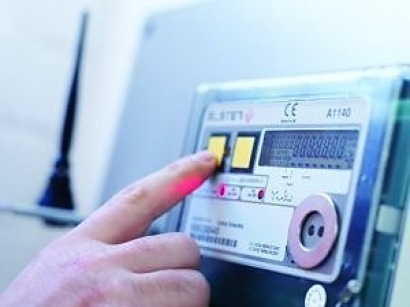
During my travels around Japan this summer, I have been looking for ways the world might learn from this nation’s experience in dealing with the Fukushima Daiichi nuclear plant disaster. As the future of nuclear power in Japan is hotly debated, new ideas are emerging for reducing power consumption and promoting renewable energy. Will these ideas catch on elsewhere?
As I write this report, radiation has been detected in Fukushima-area beef that has already been shipped throughout Japan and, in some cases, consumed. Authorities say there is nothing to worry about, but don’t eat it every day! The Japanese, now accustomed to almost daily revelations about the extent of the radiation, seem to be taking this in stride. The latest prediction is that the nuclear plant’s melted fuel rods will not be removed for up to 10 years, and residents in the evacuation areas may not be allowed to return home for an even longer period of time.
Because a number of Japan’s nuclear plants remain off line due to earthquake damage and scheduled maintenance, concern is rising about power shortages during periods of peak air conditioning. Already, this has been an unusually hot summer – from June through mid-July, over 13,000 Japanese were admitted to emergency rooms for heatstroke, and 27 died.
To address the potential energy shortages and avert blackouts, the Japanese government has taken several emergency steps. One is to encourage residents to reduce their indoor air conditioning to around 28ºC (82ºF). This voluntary program has been so successful that the government has had to warn residents not to over do it. In particular, there is concern about preventing food spoilage and keeping the elderly cool. So far, over half of the heatstroke cases were among people at least 65 years old. Another step taken by the government is to require large industrial and commercial energy users in eastern and northeastern Japan (the areas most affected by power shortages) to reduce peak-time electricity consumption by 15 percent from a year ago. Violators are subject to fines.
To reduce peak energy consumption during weekdays, some manufacturing facilities have switched Thursday/Friday operations to the weekend, when electricity demand is less and rates are lower. And smart meters are allowing plant workers to instantaneously monitor electricity use – when consumption exceeds goals, nonessential uses such as office lighting and air conditioning are cut back.
Interestingly, smart meters not only allow managers to see electricity consumption in the plant, but plant workers can also keep tabs on headquarters electricity use. These smart meters are now widely used in Japan as tools for monitoring electricity consumption. I’ve even seen them on Tokyo trains, where commuters can monitor how well the city is doing in cutting demand for electricity. During this summer’s heat wave, holding down energy use has been a particular problem in the afternoons, when each 1C (1.8C) increase in temperature raises Tokyo electricity demand by about 1,700 megawatts, equivalent to the power requirements of 340,000 homes.
Can we learn new ways to save energy from the Japan crisis? If Japanese industry can cut back energy use by 15 percent in short order and with relative ease, could other countries do the same?
In the U.S., about 25 percent of total electrical power generation is consumed by the industrial sector. If the U.S. implemented a mandatory Japanese-style 15 percent reduction in industrial electricity use, national electric power consumption would fall by around 4 percent. If consumption in the commercial sector was also cut by 15 percent, an additional 6 percent reduction in national electricity use could be achieved. Thus, following the Japanese example, U.S. industrial and commercial peak energy consumption could potentially be reduced by almost 10 percent. And this could be accomplished largely through conservation and shifts in production schedules, with little new investment required.
An added benefit from conservation efforts would be that greenhouse gas emissions would fall, although the reduction would vary from region to region, depending on the mix of fossil, nuclear, and renewable energy sources. Similarly, air pollution would be lowered, the amount depending on the energy mix.
For many applications, energy efficiency and conservation are crucial to making renewable energy economical. For example, net-zero homes that rely on photovoltaic, geothermal, or wind power are inherently low-energy consuming structures – often small and well insulated with the latest energy-efficient appliances. By reducing energy consumption, Japan will be well positioned to move forward with its ambitious plans to replace nuclear and fossil fuel generators with renewable energy technology. As Japan becomes the world’s renewable energy leader, will the rest of us be left behind?

